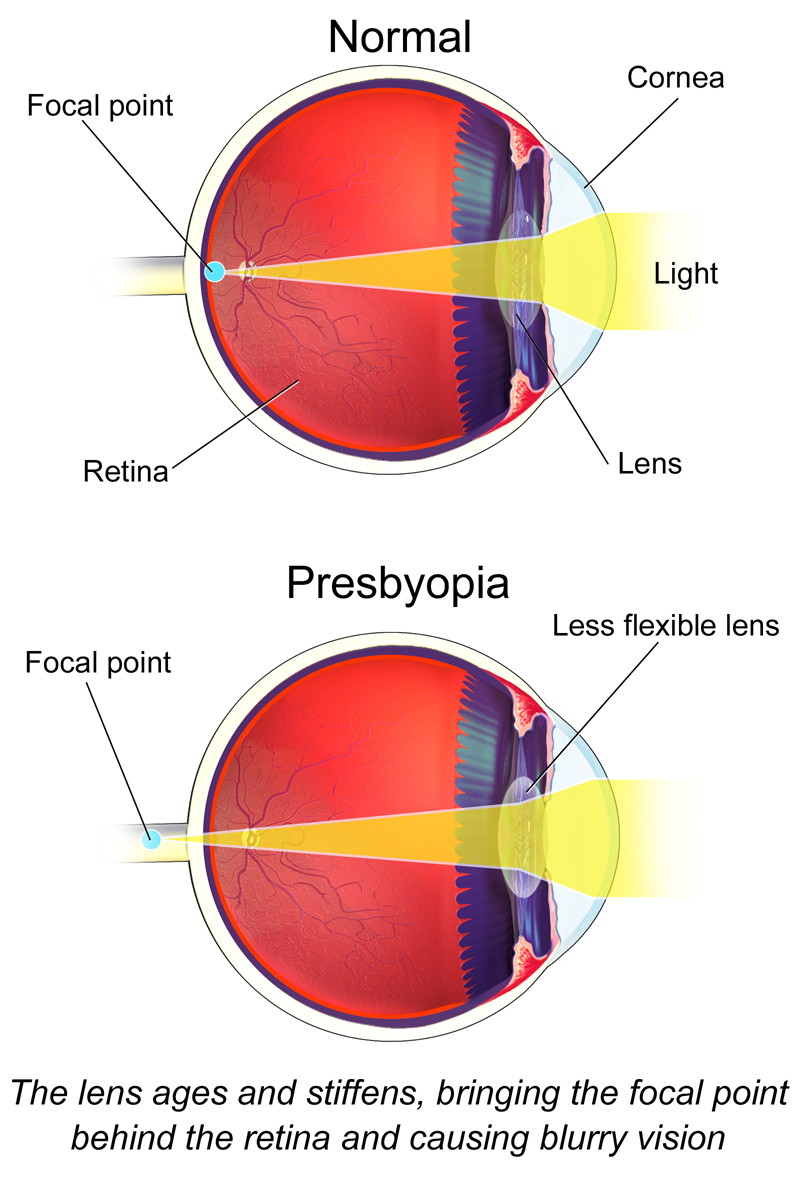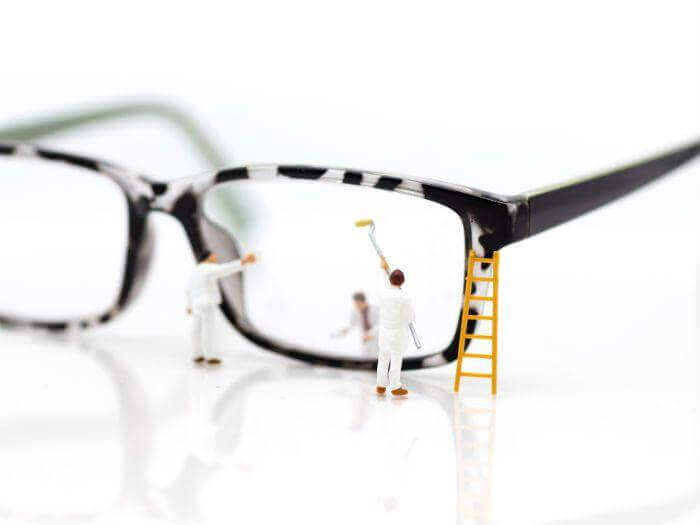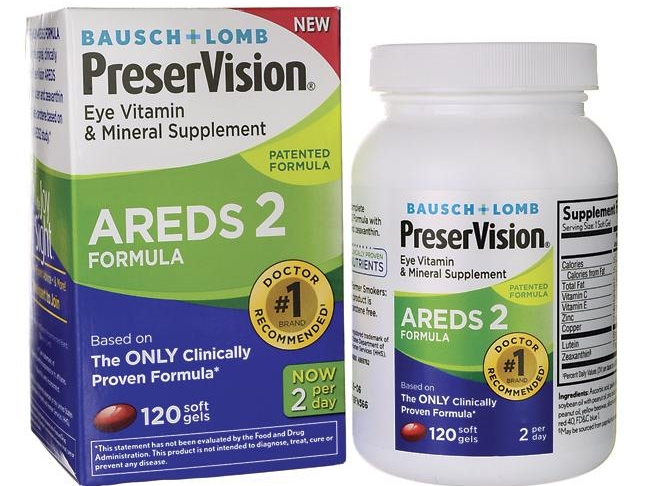What is Presbyopia? —And Why Our Arms Aren't Long Enough
/Nobody is immune to presbyopia: definition and acuity gradually fade as we lose the ability to focus them. It happens to everyone.
When we are young, we can hold things right at the tip of our noses and still see them with great detail; I know a few people who wistfully refer to their younger years as their “prebyopia” years.
Inevitably, as we age focusing on what’s right in front of our faces gets harder and harder.
Why do we get Presbyopia? What Causes It?
Here’s a quick video explaining what presbyopia is if you haven’t got the time to read through the whole article…or if you have to hold your phone 5 feet away:
Over the years, we slowly lose the ability to bring what’s near our eyes into focus. At a point it hit me that I suddenly can’t read without my glasses.
I was struck by a sudden inability to focus —eyes straining yet still unable to read the text I was already holding out further than comfort would allow.
While presbyopia is also called age-related farsightedness it differs from nearsightedness (myopia) or farsightedness (hyperopia).
The description of presbyopia, medical definition aside, is an insufficiency in focusing ability rather than actual blurriness at any given distance; presbyopia assumes the proper distance prescription is being worn.
Doubtless you’ve seen people pushing a menu farther away to try to read the Soup De Jour.
This presbyopic Lady’s predicament is exacerbated by fine print and low lighting.
How Does The Eye Focus
Similar to how a camera lens adjusts to shift a shots focus, tiny muscles in our eyes tug on our lenses to adjust them and allow us to focus.
If we spend too long on close reading, or when presbyopia strikes, our eyes feel strained because the muscles inside them are straining.
Generally, when we hit our 40s, suddenly the length of our arms begins to determine whether we can read what we are holding; the problem that our arms are not long enough.
Presbyopia is caused by a stiffening of the lenses in our eyes, which sit right behind the colored iris. Our lenses stiffen because as we age they naturally thicken over time.
Increased stiffness of the lens makes it more strenuous for the tiny muscles in our eyes to change its shape, and focus the the light we see.
The stiffer the lens becomes, the more tiring and difficult it is to change focus.
Luckily, there are many great ways to correct presbyopia!
Presbyopia Treatment Options
Glasses
While glasses have been around for more than 700 years, they are still the most go-to solution for many. Glasses focus the light coming into your eyes for you so the lens inside your eye does not have to change shape in order to focus.
Reading Glasses: You wear these when you’re reading, you take them off when you aren’t. The downside to reading glasses is that if you look through them at a distance, things are blurry.
Lined Bifocals: These solve the glasses-on-glasses-off problem of reading glasses by providing a distance prescription in the top half of the lens and reading prescription below, letting you jump back and forth without removing your glasses. These are better if you have a distance prescription as well as presbyopia.
Progressive Addition Lenses: These lenses transition seamlessly between distance and near optics, they let you simultaneously see at all distances including the intermediate area (computer distance), which is lost in a bifocal. Cosmetically, there is no line on the lens.
While old progressive lenses created peripheral distortions and swim effect, Midtown Optometry’s digitally designed and laser cut lenses are much more precise and have almost no peripheral distortions.
The digital progressive lenses used at Midtown Optometry utilize advanced technology to give easy adaptation, great visual clarity, and protection from disruptive blue and ultraviolet light. .
Contact Lenses
Contact lenses are great if you enjoy being able to read, but also live an active lifestyle. Nowadays you don’t need to carry around a pair of reading glasses on top of your distance contacts
Multifocal Contact Lenses: Available in rigid, gas-permeable, or soft lens materials, are available if you prefer contact lenses to spectacles. These come in varieties designed for single-wear, daily-wear, and even extended-wear. Multifocals can have a bifocal or progressive lens designs..
Monovision Contact Lenses : Often prescribed for presbyopes aged 40 and older, with monovision, you wear a contact lens for near vision on one eye and, if needed, a lens for distance vision on the other eye. Most people who try monovision are able to adjust to it, as our brains can learn to unconsciously prefer one eye over the other for different tasks. However, others report reduced visual acuity and some loss of depth perception with monovision.
Surgery
Are you frustrated with Presbyopia, but lose tor break your glasses easily? Do contacts hurt your eyes, or maybe you’re tired of having to constantly replace them?
While more expensive, surgical procedures promise a more permanent presbyopia cure.
Conductive Keratoplasty (CK): a noninvasive surgical procedure which utilizes radiofrequency energy to correct presbyopia with or without astigmatism.
It can also be used to correct residual refractive error after laser in-situ keratomileusis (LASIK) or cataract surgery. The portable nature of CK and its low comparative cost make it an important tool in the ever evolving world of refractive surgery.
Monovision LASIK: This modified LASIK procedure creates the same effect as monovision with contact lenses, but without the need to wear contacts.
Refractive Lens Exchange (RLE): This procedure is similar to cataract surgery, except the lens being replaced has not yet become clouded by a cataract. To restore near vision, the surgeon replaces your natural lens with an artificial, intraocular lens (IOL) which can be either a multifocal or an accommodating IOL.
Corneal Implant or Inlay: In this procedure, the surgeon implants what’s called a corneal inlay into the cornea of your non-dominant eye. Right now the only FDA-approved corneal inlay available in the U.S. is the Kamra Inlay, from AcuFocus
What Presbyopia Treatment is Right?
Come and see us if you prefer the stylistic flexibility of a pair of glasses, or the relatively non-invasiveness of contact lenses; we would love to work with you figure out the perfect lenses or pair of contacts for you.
If, on the other hand, you’re interested in a more permanent solution, we can help you decide which surgical treatment option will work best for your eyes…
Midtown Optometry is located at Suite J5, in the historic Frank Lloyd Wright Medical Complex at 550 Water Street.
Feel free to walk in or schedule an appointment with us online!
































